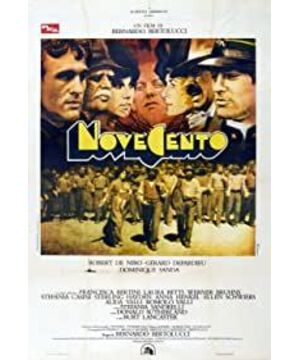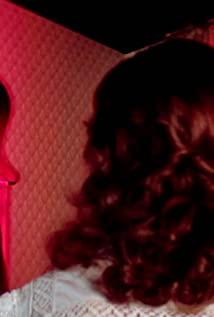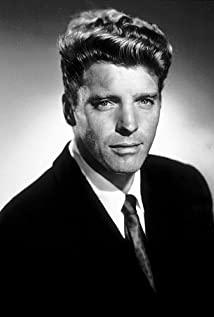Bernardo Bertolucci, the director of Novecento, is not unfamiliar to Chinese audiences. Last Emperor was the first modern film to be filmed on location in Bauhinia City, and it also won him the Best Director Oscar. And "The Dreamers" directed by him is also the image enlightenment for many literary and artistic young people to understand the French student movement in the 1960s.
Compared with the above-mentioned two films that have long been famous in China, this "New Century" is his focus on his home country, and it is also his earlier work. It was first released in 1976 when the director was 36 years old. The original cut of the film was 317 minutes long (5 hours and 17 minutes), and the viewing time itself is "epic", even if it's not about its content.
The shots of "New Century" most of the time beautifully and delicately outline the local conditions and customs of the northern Italian manor and countryside, and also interspersed with the embellishment of the northern Italian town life in the first half of the 20th century. However, behind these lens descriptions and character stories, what Bertolucci really hopes is to retrace and construct a picture of Italian rural society for more than half a century, more specifically, a set of entangled entanglements The picture scroll of the struggle of local society. It is this intention to integrate the fate of the two protagonists into the political formations and social movements of modern Italy, thus serving as a kind of microcosm of the political changes of the Apennine Peninsula.
Bertolucci himself believes that it is natural for the director's views on social and political issues to embed or influence the performance of the film. To a certain extent, this film is indeed a typical political film, and what Bayesian used a considerable amount of film length to give is actually a comment and reflection on the issue of social change. As a magnificent epic masterpiece, on the whole, the most successful part of the film may be the clear delivery of such a type of discourse and discussion that is biased towards the political level. Of course, in addition to "New Century", Bayesian's insights into the social and political ideas of the same 20th century country are also found in his earlier Prima della rivoluzione (1964) and "Contemporaries" in 1970. ) (Il conformista). However, in "New Century", the narrative design, the content of discussion, the possible metaphors he made, and the time span involved are undoubtedly more ambitious.
From the design and development of the theme, we can think that the director tends to use the Alfredo or Berlinghieri family and the Olmer or Dalco family as representatives of their respective classes , and these two classes (landlord/employer-tenant farmer/tenant worker) are the two constituent subjects of the social struggle in the northern rural areas that Bertolucci hopes to present. Since the end of the 19th century, the proletarian peasants in northern Italy have become organized, and the Union, which reflects their interests, has become more and more active, whether to stick to the original social status quo (the padrone system), or to advocate for the creation of more equal The left-wing ideological trend of society, this issue directly affects the epic entanglement in Bertolucci's eyes, and also affects his understanding of the overall situation of Italian society in the first half of the 20th century. In the film, in addition to the two protagonists, whether it is Alfredo's grandfather Alfredo Sr., his father Giovanni, or Olmer's grandfather Leo, these characters all contain the It is an imaginative transplant of a specific group of people and a specific concept of consciousness.
Many people know that Bertolucci has a pro-socialist mindset. And this is evident in the opening credit of the film where he uses Giuseppe Pellizza da Volpedo's 1901 painting "Il quarto stato" as the background, the famous painting Another name of the book is "The Path of Workers", and Bayesian does not shy away from his populist consciousness and value orientation. At the beginning of the feature film, Olmer, as a peasant's child, was born first on the same day than the host's child, Alfredo, which is probably also a metaphor for the director's idea, without the privilege of identity. The birth of commoners or peasants preceded the so-called landlords and nobles, and the rationality of the latter's existence was based on the existence of the former, as Olmer later said to Alfredo, I caught the frog, and you ate it. frogs, implying a certain "parasitic" nature of the latter class. In the film, there is a section of pig killing that is deliberately performed. In an interview with the BBC's Jeremy Isaacs in September 1989, Bertolucci said that pig killing was one of the most dramatic and exciting moments at country feasts, and that pigs were not thrown away at random. Any part of it, as shown in the video, some parts are edible (including guts), some parts can be used as brushes, any part is useful. Bertolucci himself even made a short film about killing pigs. The pig-killing scene, like the country dance, was a link between the peasant community, and importantly, this form of the household commune was also the basis for the communist model to be recognized as a viable practice. Bertolucci's stroke was not an arbitrary addition, but provided an empirical support for the ideals that Olmer was striving for.
Bertolucci later said that the place where he lived in his youth had a strong communist influence and that he was close to the peasants, which is why he was involved in their emotions, in their language, following their interpretations. But in addition to half being close to the peasants, the other half came from the influence of his father's family, whose grandfather was a landowner. We can’t be sure whether he saw the shaping of Alfredo’s duality as a manifestation of his own experience, but the complex social struggles of New Age must have also existed more or less directly in Bertolucci’s personal world. Therefore, we cannot view the film as a purely one-dimensional tribute to and lamentation of socialist or communist ideals. An interesting poster from the early years of the film shows three generations of the Bellingieri family on the left, farmers on the right, and Benito Mussolini in the center, raising his hands. This poster may have summed up the main theme of the film and the director very brilliantly. In the social process of this new century, the relationship and struggle between the two sides were finally covered by the shroud and shadow of the fascist regime, but the fascist regime’s Rise and survival are very closely related to both, just as the role of Attila played by Donald Sutherland in the film influences the development of the story.
Among the fascists in Italy, many originally belonged to the socialist camp, including the later dictator and fascist "leader" (Duce) Mussolini. At the beginning of the 20th century, National Syndicalism/National Syndicalism (National Syndicalism) and Integrated Nationalism (integral nationalism) thought trend in Italy, calling for further solution of Italian social problems and completion of Italian social revolution after the National Liberation Movement (Risorgimento) . In the 10s, the debate over whether Italy was involved in World War I against Germany and Austria highlighted divisions among socialists, with a group of advocates of intervention in the European war voluntarily leaving or being expelled from their original camp, and Mussolini was also there. He was expelled from the Italian Socialist Party (Partito Socialista Italiano) for a period of time, and represented by him, this attitude of sympathy and support for unified nationalism gradually shaped the later fascism. And Mussolini, who often borrowed from Nietzsche's Übermensch, advocated for violence and control, as well as his anti-egalitarian and elitist thinking, which ultimately led fascists to embark on a different path from socialism. By the 1920s, fascist supporters and socialists had become the two main antagonists of the movement in urban areas. This is the setting basis for Olmer and Attila, who is a supporter of fascism, to meet after the First World War and inevitably go to opposition.
Another influence of the late 10s was that, with the success of the Russian Revolution, a group of socialists began to turn to the Bolsheviks and later the Comintern to establish pro-Russian communist groups in Italy, such as the same by the Comintern. The Communist Party of Italy (Partito Comunista della Italia), a spinoff of the Italian Socialist Party. The combination of Anita and Olmer undoubtedly influenced many aspects of Olmer's thought. In some passages about their activities, it is the influence of the 1920s in guiding social movements, and even more so. The influence of proactive communism has gradually replaced the actual scene of conservative socialists. Correspondingly, the "mission" of the Blackshirts of the fascist Attila was precisely to undermine the actions and local influence of these communist and socialist supporters. Brian Sullivan, in his review of the memoirs of Mussolini's mistress Margherita Sarfatti (My Fault: Mussolini As I Knew Him) wrote: "Across the Po plain, the fascists Molecules burn down every house associated with the socialists...". The violence in "New Century" destroyed the "Casa del Popolo" (Casa del Popolo) and brutally killed four elderly people who were studying communism theory. Impressively, Attila in the film mercilessly kills a cat before setting off against the self-organized party to see off the old man, reminiscent of what Darnton described as happening at 18. The cat slaughtering on rue Saint-Severin in Paris in the 19th century, the director made clear the meaning of a kind of collective violence that borders on madness and self-righteousness.
Bertolucci does not want to directly express the content of the ruling class level, unless it has the necessary influence on the local society, although his focus is always local, he has the idea of knowledge. And Mussolini, who had a key influence on modern Italian politics, marched into Rome (Marcia su Roma) and the Fascist Party came to power, which he also demonstrated indirectly. In the Belinghieri's house, the fascists represented by Attila became more and more powerful. Even though Alfredo himself did not like him, when he became the head of the family, he had to follow his opposition to socialist change. The politically conservative father's choice, to stick with Attila, rather than take the advice of his farmer friend Olmer. This may also be typical of the choice of landowners and elites in the era of fascist dictatorships. The fascist party's seizure of power required the support of the army, capitalists or the powerful, and in fact it was the compromises of these upper classes, including the royal family, that made it easier for Mussolini to get from Luigi Facta's State power was plundered from the hands of a liberal cabinet. But the support of these classes to fascism obviously did not bring them effective protection of interests, and Attila in the film killed a right-wing landlord who accepted fascist behavior as a child of future hope, and tried to blame Olmer . Although, in the later story, in order to protect Olmer, Alfredo chose to fire Attila, but at that time he could no longer protect the other farmhands of his estate from revenge by the fascists. Alfredo's compromise and conservatism as a "padrone" made him a true "master" class in the eyes of leftists such as Olmer, and an object of socialist reform that needed to be eliminated. And Ada, who symbolizes freedom and unrestraint, is disappointed and angry with Alfredo's dull and numb attitude and cowardly behavior, showing another layer of reflective meaning.
Another thing worth mentioning is the design of the film's time concept. "New Century" does not focus on the depiction of time nodes, except for the Liberation Day on August 25, 1945 and the trial of Alfredo that clearly appeared at the beginning and end of the film. In addition, there are only occasional inaccurate identifications. Moreover, even the time when the two protagonists were born, as a flashback method, the film just wrote "many years ago" (Molti Anni Prima), if it weren't for the hunchback (rigoletto) dressed as a jester who shouted that Verdi was dead, Actually we have no way of knowing that was 1900. For most of the time in the progress of the story, we can only speculate through the corresponding circumstances or events. I believe that Bertolucci's time processing is intentional. On the one hand, the time nodes that are not strengthened are actually more in line with the first-person perspective, so it is easier for the audience to integrate into the overall background. The evolution of the story has a considerable sense of synchronous substitution. On the other hand. By blurring the time nodes, the criticality of specific events in the narrative of the film is blurred. And weakening the sense of importance of the event itself will make the social picture Bayes try to build break through the framework constructed by a specific point in time and move towards a certain kind of universality. It should be said that Bertolucci's perception of this historical phenomenon is of a long-term trial nature. This is also why at the end of the film, the director wants to design the two protagonists to wrestle from 1945 to the age of gray temples. The concept of time implied by Bayesian is undoubtedly the post-war future, but this future is not limited and ended. The postwar government's attempt to co-opt and embody the interests of liberals, socialists, and communists at the same time has resulted in perpetuating the life of the class of "masters" the communists wished to expel. The tearing of the two struggling classes is still going on. In this sense, the content shown in the film actually exceeds the length of half a century, and even has some realistic implications.
At the end of the story, the old Alfredo walked to the rails again, and a train whistled, just like a childhood scene, but different from the past, the old Alfredo chose a more dangerous pillow. In a lying position, Old Olmer, who was not far away, just gave a helpless smile. After a moment, the picture flashes back and freezes on the scene where little Alfredo is lying in the middle of the railroad tracks. Everything seems to herald the same ending as the past. It seems that the "master" is dangerous, but in the end, he can pass through safely, and everything is not yet. Change……
View more about 1900 reviews











